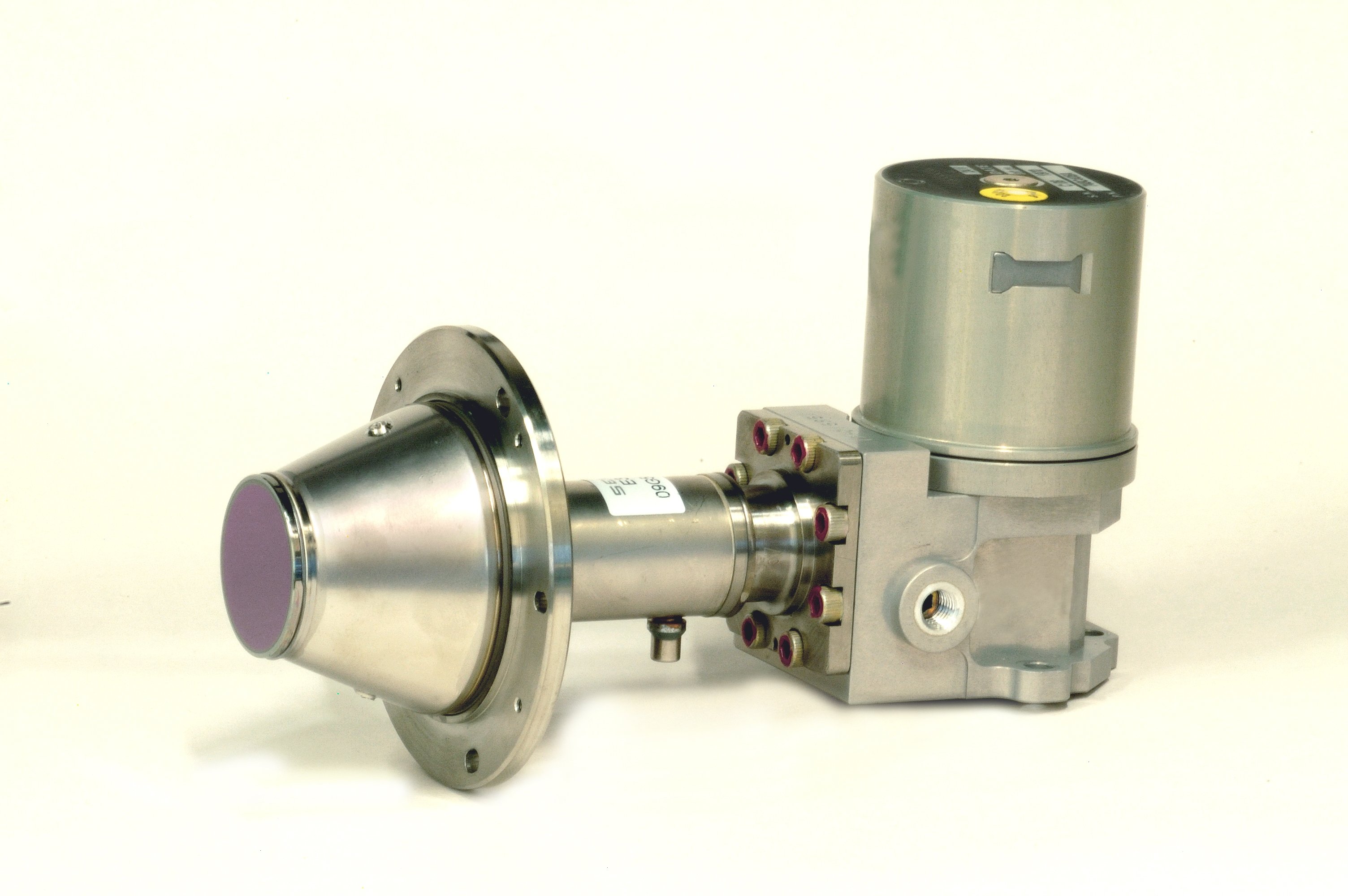Condor HD
DUAL WAVEBAND INFRARED DETECTOR
Leonardo designs, develops, and manufactures Infrared (IR) detectors at our dedicated facility in Southampton, UK. With a reputation for providing customers with the best in high-performance and cost-effective technology for IR camera systems, we offer a unique level of expertise.
The Condor HD Dual Waveband Infrared (DWIR) detector is a 1280 x 1024 Mercury Cadmium Telluride (MCT), Integrated Detector Cooler Assembly (IDCA), designed for high performance imaging in the 3 - 5μm Medium Wave Infrared (MWIR) and 8 - 10μm Long Wave Infrared (LWIR) wavebands.
Each of the 1280 x 1024 pixels in the array can be switched between MWIR and LWIR sensitivity mode by changing the bias voltage on the device, ensuring spatial coherence between the two bands.
The Condor HD DWIR Detector is an evolution of the Condor II Detector, halving the pixel pitch from 24µm to 12µm, increasing the number of pixels by a factor of four within the same active sensor area and detector dewar.
Each DWIR pixel can either operate in Integrate-Then-Read (ITR) mode a MWIR or LWIR ‘single-band mode’, or in Integrate-While-Read IWR mode in both single-band modes, and an interleaved MWIR/LWIR ‘dual-band mode’.

- Key Features
- Key Benefits
- Product Datasheet
- Low cost
- High resolution
- High frame rate
- High sensitivity
- Reduction in false alarm detection
- Snapshot or interlaced operation
- Concurrent 3 - 5μm and 8 - 10μm operation
- Dedicated 3 - 5μm operation
- Dedicated 8 - 10μm operation
- High electro-optic performance with low crosstalk, automatic anti-blooming at the pixel level and excellent sensitivity
- Windowing gives enhanced frame rates over selected areas of the array
- Single sensor solution for Medium Wave (MW) and Long Wave (LW) without compromise
- Reduced pixel pitch provides more pixels on target over 3rd Generation
- Wave band switching to optimize performance in all imaging conditions
Format
- Array: 1280 x 1024 pixels
- Pixel pitch: 12μm
- Active Area: 15.36 x 12.29mm
Typical Performance
- MW NETD (median): 12mK
- LW NETD (median): 26mK
- Pixel Operability: >99% (MW and LW array respectively)
Interface Parameters
- Modes: Snapshot or interlaced
- Configuration Control: Single serial interface
- Output Voltage Range: 2.8 V
- Charge Capacity (dedicated): 3 Me- or 11 Me- Selectable
- Number of Outputs: 8
- Pixel Rate: Up to 10 MHz per output
- Array Operating Temperature: 80 K nominal
- Nominal Operating Voltage: 3.6 V
- Minimum Pins for Operation: 30
- Number of Input Clocks: 1
- Window Material: Germanium
- Window Thickness: 1.73mm
- Cold Filter Material: Silicon
- Cold Filter Thickness: 0.4mm
ICDA
- Weight: <750g
- Power Consumption: <10 W steady state
- Cooling Engine: Rotary Stirling engine
- Operating Temperature Range: -40°C to +70°C

